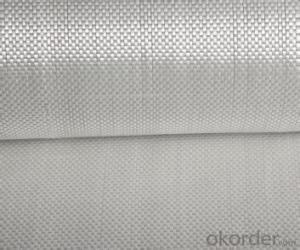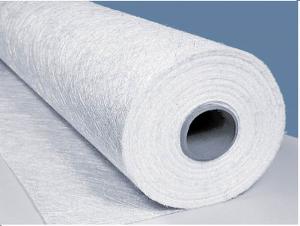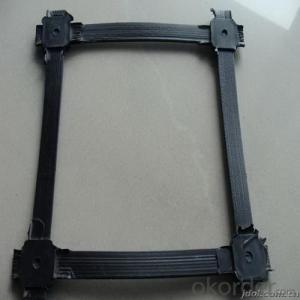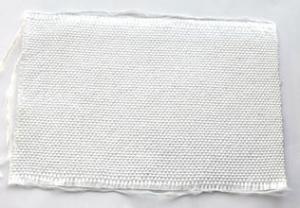Silica85 High Silica Fiberglass Fabrics
- Loading Port:
- China Main Port
- Payment Terms:
- TT OR LC
- Min Order Qty:
- -
- Supply Capability:
- -
OKorder Service Pledge
Quality Product, Order Online Tracking, Timely Delivery
OKorder Financial Service
Credit Rating, Credit Services, Credit Purchasing
You Might Also Like
Quick Details
| Place of Origin: | Brand Name: | Model Number: | |||
| Weight: | Width: | Weave Type: | |||
| Yarn Type: | Alkali Content: | Standing Temperature: | |||
| applications: |
Packaging & Delivery
| Packaging Detail: | rolls packed in cartons loaded on pallets |
| Delivery Detail: | within 15 days after order confirmation |
Specifications
1.withstand temperature up to 1000 degree
2.weight:about 600g/m2
3.applications:heavy duty welding protection;
- Q: What's the function of fiberglass cloth? Where can I use it?
- Use more now is fiberglass duct, glass fiber glass cotton material, is insulation core material composite wind pipe model, generally 2.5 cm thickness, glass fiber materials with fine wool like dust, can not be directly used for ventilation, so both sides of glass fiber insulation core material can be used glass fiber cloth paste, to prevent dust lanose into the duct.
- Q: What are the different coating options available for fiberglass fabric?
- There are several coating options available for fiberglass fabric. These coatings are designed to enhance the fabric's properties and make it suitable for various applications. 1. Silicone Coating: Silicone coating provides excellent heat resistance and can withstand high temperatures. It also offers good chemical resistance, making it suitable for applications in industries such as aerospace, automotive, and insulation. 2. Polyurethane Coating: Polyurethane coating provides a durable and flexible finish to fiberglass fabric. It offers good abrasion resistance, waterproofing, and UV stability. This coating is commonly used in applications like outdoor covers, tents, and awnings. 3. PTFE Coating: PTFE (Polytetrafluoroethylene) coating is known for its non-stick properties and high resistance to chemicals, heat, and weathering. It provides excellent electrical insulation and low friction properties. PTFE coated fiberglass fabric is commonly used in applications such as conveyor belts, release sheets, and insulation. 4. Acrylic Coating: Acrylic coating provides a smooth finish and enhances the fabric's durability and strength. It offers good resistance to UV rays, mildew, and abrasion. This coating is commonly used in applications like marine covers, outdoor furniture, and bags. 5. Neoprene Coating: Neoprene coating provides excellent resistance to oil, chemicals, and weathering. It also offers good flame resistance and flexibility. This coating is commonly used in applications such as protective clothing, gloves, and industrial curtains. 6. Vinyl Coating: Vinyl coating provides a waterproof and durable finish to fiberglass fabric. It offers good resistance to UV rays, abrasion, and chemicals. This coating is commonly used in applications like outdoor furniture, truck covers, and pool liners. These are just a few examples of the different coating options available for fiberglass fabric. The choice of coating depends on the specific requirements of the application, such as heat resistance, chemical resistance, flexibility, and durability.
- Q: Is fiberglass fabric resistant to bacteria and fungi?
- In general, bacteria and fungi find it difficult to thrive on fiberglass fabric due to its non-porous nature. Moreover, fiberglass fabric is commonly enriched with special coatings or finishes, which further boost its ability to ward off these microorganisms. Consequently, fiberglass fabric emerges as an optimal selection for scenarios that prioritize cleanliness, such as the medical or food processing sectors. Nonetheless, it is crucial to acknowledge that the level of resistance may differ based on the particular type of fiberglass fabric and the existence of supplementary treatments or coatings.
- Q: What is the UV resistance of fiberglass fabric?
- Fiberglass fabric has excellent UV resistance, making it highly resistant to damage or degradation from prolonged exposure to ultraviolet radiation.
- Q: What is the melting point of fiberglass fabric?
- The melting point of fiberglass fabric typically ranges between 1,000 to 1,400 degrees Celsius (1,832 to 2,552 degrees Fahrenheit).
- Q: How does fiberglass fabric perform in wind and storm conditions?
- Fiberglass fabric performs exceptionally well in wind and storm conditions. Its inherent strength and flexibility make it highly resistant to damage from strong winds, gusts, and turbulent weather. Additionally, its non-porous nature prevents water absorption, ensuring that it remains stable and unaffected by moisture during storms. These properties, combined with its durability, make fiberglass fabric an excellent choice for applications that require reliable performance in challenging weather conditions.
- Q: Can fiberglass fabric be used for making insulation tapes?
- Yes, fiberglass fabric can be used for making insulation tapes. Fiberglass fabric is an excellent choice for insulation tapes because it has excellent thermal insulation properties. It is resistant to high temperatures and can withstand extreme heat, making it ideal for applications where insulation is required. Additionally, fiberglass fabric is also resistant to chemicals, moisture, and fire, further enhancing its suitability for insulation tapes. Its strong and durable nature ensures that it can withstand wear and tear, making it a reliable choice for long-lasting insulation tapes. Overall, fiberglass fabric is a great material for making insulation tapes due to its thermal insulation properties, resistance to heat and chemicals, and durability.
- Q: What are the different weaves available in fiberglass fabric?
- Fiberglass fabric offers a variety of weaves, each with its own distinct characteristics and uses. Here are a few common examples: 1. The plain weave is the most basic and widely used in fiberglass fabric. It follows a simple over-under pattern, providing stability, strength, and versatility. 2. Twill weave creates a diagonal pattern, offering excellent flexibility and ease of handling. It finds applications in aerospace, automotive, and marine industries. 3. Satin weave has a unique pattern where weft yarns float over multiple warp yarns, resulting in a smooth and glossy surface. It is known for its drapability, strength, and luxurious appearance, often used in high-end industries. 4. Leno weave features twisted pairs of warp yarns, creating an open, mesh-like structure. It offers breathability and is commonly used in filtration and reinforcement applications. 5. Basket weave combines multiple warp and weft yarns, forming a checkerboard-like pattern. It provides stability and resistance to distortion, making it suitable for applications with high dimensional requirements. These examples showcase the wide range of options available in fiberglass fabric weaves. The choice depends on specific needs like strength, flexibility, breathability, or appearance.
- Q: How do you do fiberglass fabric on latex paint?
- A small area of their own to do the next experiment.
- Q: Can fiberglass fabric be used for insulation in underground structures?
- Yes, fiberglass fabric can be used for insulation in underground structures. It is a commonly used material for insulation due to its high thermal resistance and moisture resistance properties. Additionally, fiberglass fabric is lightweight, durable, and easy to install, making it suitable for underground applications where insulation is required to maintain temperature control and prevent condensation.
Send your message to us
Silica85 High Silica Fiberglass Fabrics
- Loading Port:
- China Main Port
- Payment Terms:
- TT OR LC
- Min Order Qty:
- -
- Supply Capability:
- -
OKorder Service Pledge
Quality Product, Order Online Tracking, Timely Delivery
OKorder Financial Service
Credit Rating, Credit Services, Credit Purchasing
Similar products
Hot products
Hot Searches
Related keywords
























